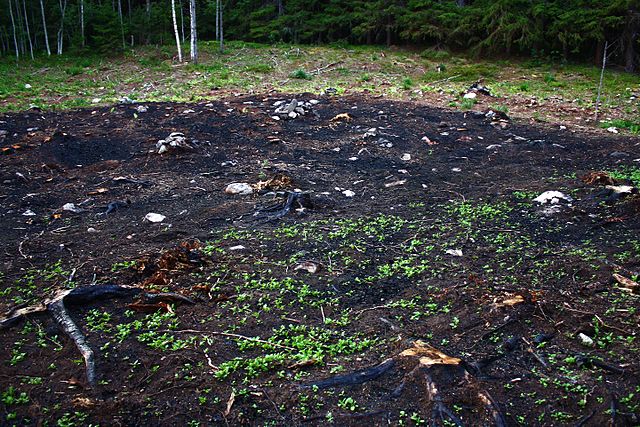2006 Southeast Asian haze
The 2006 Southeast Asian haze was an air pollution event caused by continuous, uncontrolled burning from "slash and burn" cultivation in Indonesia, which affected several countries in the Southeast Asian region and beyond, including Malaysia, Singapore, southern Thailand, and as far away as Saipan; the effects of the haze may have even spread to South Korea. Local sources of industrial pollution also, inadvertently, contributed to increases in air toxicity ; notably at-risk areas included communities close to textile factories, fertilizer plants, meat-packing plants, industrialised dairy farms, shipping ports, and oil refineries. Air quality was lower, overall, for residents of more densely-populated cities. In the highly urban and industrialised Klang Valley of Malaysia, in particular, the surrounding elevated terrain acted as a natural retainer of polluted air, aggravating the situation as the haze set in.
Satellite photograph of the haze above Borneo
The business district of Kuala Lumpur in the evening of 29 September 2006. Menara Kuala Lumpur was barely visible. The average API for that day was in between 70 and 80.
Overlooking the Perdana Lake Gardens in Kuala Lumpur at noon of 16 October 2006. The API read 76 at 11 AM. On a clear day, the Parliament and the National Monument would be visible on the horizon.
Similar shot on the morning of 2 November 2006. Notice the Parliament, the Tugu Negara and the mountains.
Slash-and-burn agriculture is a farming method that involves the cutting and burning of plants in a forest or woodland to create a field called a swidden. The method begins by cutting down the trees and woody plants in an area. The downed vegetation, or "slash", is then left to dry, usually right before the rainiest part of the year. Then, the biomass is burned, resulting in a nutrient-rich layer of ash which makes the soil fertile, as well as temporarily eliminating weed and pest species. After about three to five years, the plot's productivity decreases due to depletion of nutrients along with weed and pest invasion, causing the farmers to abandon the field and move to a new area. The time it takes for a swidden to recover depends on the location and can be as little as five years to more than twenty years, after which the plot can be slashed and burned again, repeating the cycle. In Bangladesh and India, the practice is known as jhum or jhoom.

Slash-and-burn agriculture in Chiang Mai, Thailand
Slash-and-burn agriculture in Maaninka, Finland, in the 1920s
Deforestation in Indonesia to obtain palm oil. Much of the country's forests are being destroyed at a very rapid rate to be replaced by palm trees.
A recently burned area at the Telkkämäki Heritage Farm in Finland, demonstrating the technique.








